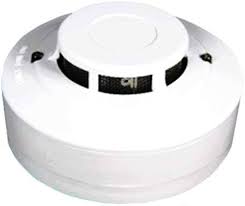Fire Alarm Detectors: Ensuring Safety and Security
Fire alarm detectors are essential components of any fire safety system, designed to detect the presence of smoke, heat, or flames and alert occupants of a building in the event of a fire emergency. These detectors play a crucial role in safeguarding lives and property by providing early warning signals that can help prevent the spread of fires and facilitate timely evacuation.
There are various types of fire alarm detectors available, each serving a specific purpose in detecting different aspects of a fire. Smoke detectors are among the most common type and work by sensing smoke particles in the air. When smoke is detected, the alarm is triggered, alerting individuals to the potential danger.
Heat detectors, on the other hand, are designed to respond to changes in temperature caused by fire. They are particularly useful in areas where smoke detectors may not be suitable due to high levels of dust or fumes. Heat detectors offer reliable detection capabilities in environments where smoke detection alone may not be sufficient.
Flame detectors are another type of fire alarm detector that responds to the presence of flames or intense light emissions associated with fires. These detectors are highly sensitive and can quickly identify flames even before smoke or heat is detected, providing early warning signals for faster response and mitigation efforts.
Modern fire alarm systems often incorporate a combination of these different types of detectors to ensure comprehensive coverage and reliable detection capabilities. These systems may also feature advanced technologies such as wireless connectivity, remote monitoring, and integration with building automation systems for enhanced functionality and ease of management.
Regular maintenance and testing of fire alarm detectors are essential to ensure their proper functioning when needed. It is important to conduct routine inspections, check for any signs of damage or malfunction, and replace batteries as needed to keep the system operational at all times.
In conclusion, fire alarm detectors are critical components of fire safety systems that play a vital role in protecting lives and property from the devastating effects of fires. By investing in quality detectors, conducting regular maintenance, and staying informed about best practices in fire safety, individuals and organizations can create safer environments for everyone.
Understanding Fire Alarm Detectors: Key FAQs and Guidelines
- What is a fire alarm detector?
- How does a fire alarm detector work?
- What are the different types of fire alarm detectors?
- Where should fire alarm detectors be installed?
- How often should fire alarm detectors be tested and maintained?
- What are the common causes of false alarms in fire alarm detectors?
- Are there regulations or standards that govern the installation and maintenance of fire alarm detectors?
What is a fire alarm detector?
A fire alarm detector is a specialized device designed to detect the presence of smoke, heat, or flames in a building or area and alert individuals to the potential danger of a fire emergency. These detectors are crucial components of fire safety systems and serve as early warning systems that trigger alarms to prompt timely evacuation and response measures. By continuously monitoring the environment for signs of fire, fire alarm detectors play a vital role in safeguarding lives and property by providing critical alerts that help prevent the spread of fires and ensure the safety of occupants.
How does a fire alarm detector work?
Fire alarm detectors work by continuously monitoring the environment for signs of smoke, heat, or flames, which are indicative of a fire emergency. Smoke detectors use sensors to detect the presence of smoke particles in the air, triggering an alarm when a certain threshold is reached. Heat detectors respond to changes in temperature caused by fire and activate the alarm system accordingly. Flame detectors are designed to detect the presence of flames or intense light emissions associated with fires. When any of these elements are detected, the fire alarm detector sends a signal to the control panel, which then activates alarms such as sirens or strobe lights to alert occupants of the building and prompt evacuation procedures.
What are the different types of fire alarm detectors?
When it comes to fire alarm detectors, there are several different types available to cater to varying needs and environments. The main types of fire alarm detectors include smoke detectors, heat detectors, and flame detectors. Smoke detectors are designed to sense smoke particles in the air, triggering an alarm when smoke is detected. Heat detectors respond to changes in temperature caused by fire, offering reliable detection in environments where smoke detection may not be suitable. Flame detectors are highly sensitive and can quickly identify flames or intense light emissions associated with fires, providing early warning signals for prompt response and mitigation efforts. Each type of fire alarm detector serves a specific purpose in detecting different aspects of a fire, ensuring comprehensive coverage and effective early warning capabilities in various settings.
Where should fire alarm detectors be installed?
Fire alarm detectors should be strategically installed in key locations throughout a building to ensure optimal coverage and early detection of potential fire hazards. It is recommended to place smoke detectors in every bedroom, outside each sleeping area, and on every level of the home, including the basement. Heat detectors are typically installed in areas where smoke detectors may not be suitable due to high levels of dust or fumes, such as kitchens or garages. Flame detectors are often used in areas with high ceilings or open spaces where flames may be detected more effectively. By placing fire alarm detectors in these critical locations and ensuring proper maintenance and testing, occupants can maximize safety and readiness in the event of a fire emergency.
How often should fire alarm detectors be tested and maintained?
Fire alarm detectors should be tested and maintained regularly to ensure their proper functioning and reliability in the event of a fire emergency. It is recommended to test fire alarm detectors at least once a month by pressing the test button to verify that the alarm sounds and functions as expected. In addition, professional maintenance by qualified technicians should be conducted annually to inspect, clean, and calibrate the detectors for optimal performance. Regular testing and maintenance of fire alarm detectors are essential to ensure early detection of fires, prompt evacuation, and effective fire suppression measures, ultimately enhancing overall safety and security.
What are the common causes of false alarms in fire alarm detectors?
Common causes of false alarms in fire alarm detectors can include environmental factors such as dust, steam, or cooking fumes that can trigger the sensors mistakenly. Electrical interference, improper installation, and inadequate maintenance can also lead to false alarms. Additionally, aging equipment, low battery power, and lack of regular testing and calibration can contribute to false alarm incidents. It is essential to address these issues proactively by ensuring proper installation, conducting routine maintenance, and minimizing environmental disturbances to reduce the risk of false alarms and maintain the effectiveness of fire alarm systems.
Are there regulations or standards that govern the installation and maintenance of fire alarm detectors?
Yes, there are regulations and standards that govern the installation and maintenance of fire alarm detectors to ensure their effectiveness in protecting lives and property. In India, the National Building Code (NBC) provides guidelines for the installation of fire detection and alarm systems in buildings to meet safety requirements. Additionally, the Bureau of Indian Standards (BIS) has set standards such as IS 2189 for fire detection and alarm systems to ensure quality and reliability. It is important for building owners, facility managers, and fire safety professionals to adhere to these regulations and standards to maintain compliance and ensure that fire alarm detectors are installed correctly, regularly maintained, and functioning optimally to provide early warning signals in case of a fire emergency.


